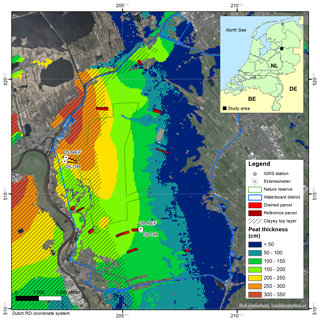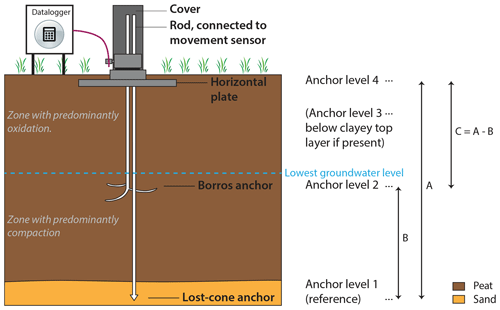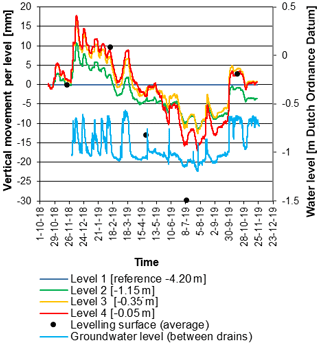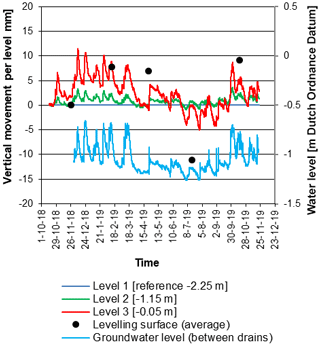Monitoring shallow subsidence in cultivated peatlands
Accurate monitoring of shallow subsidence in cultivated peatlands is a great challenge. Peat compaction by loading and peat oxidation by groundwater level lowering are two important processes contributing to shallow subsidence in cultivated peatlands, causing an overall increase in soil wetness over time and hence a lower soil-bearing capacity and agricultural production. Peat oxidation also causes emission of CO2 and other greenhouse gasses. Rigorous monitoring techniques are urgently needed to spatially and temporally map the amount and rate of subsidence and to monitor effects of measures to reduce subsidence and its negative impacts on livestock farming and agriculture. Monitoring shallow subsidence in peatlands is particularly challenging, because subsidence is a slow and spatially complex process, with average rates in the order of mm yr−1 but with higher rates possibly occurring on shorter timescales. The desired monitoring system must be able to capture this temporal and spatial variability, and preferably the contribution of different processes to total subsidence. The system needs to be applicable (technically- and financially-speaking) at regional scales, without severely impacting daily farming activities. To help design and test a subsidence monitoring system for cultivated peatland areas, four methods to measure subsidence are applied and assessed in a cultivated peatland in Overijssel (NL), namely spirit levelling, extensometery, LiDAR, and InSAR. In this paper, we focus on the levelling and extensometery methods and measurements. Subsidence was measured since October 2018 at eight livestock farms once every three months by levelling. In the same period, extensometers have measured vertical movement of (sub)surface levels hourly at two livestock farms. In addition, phreatic groundwater levels are continuously monitored. Preliminary results show vertical movements (up and down) in the order of centimeters on the timescale of weeks. These movements seem to be related to groundwater level fluctuations, but also evapotranspiration is expected to contribute to additional subsidence during the summer period. Because long term net subsidence is a slow process, additional data collection is needed to assess the different methods and the temporal and spatial fluctuations in subsidence on longer timescales. This is vital information to design the optimal method for monitoring subsidence in cultivated peatlands on large spatial scales, and to help in selecting effective measures to reduce subsidence and greenhouse gas emission in peatlands.










